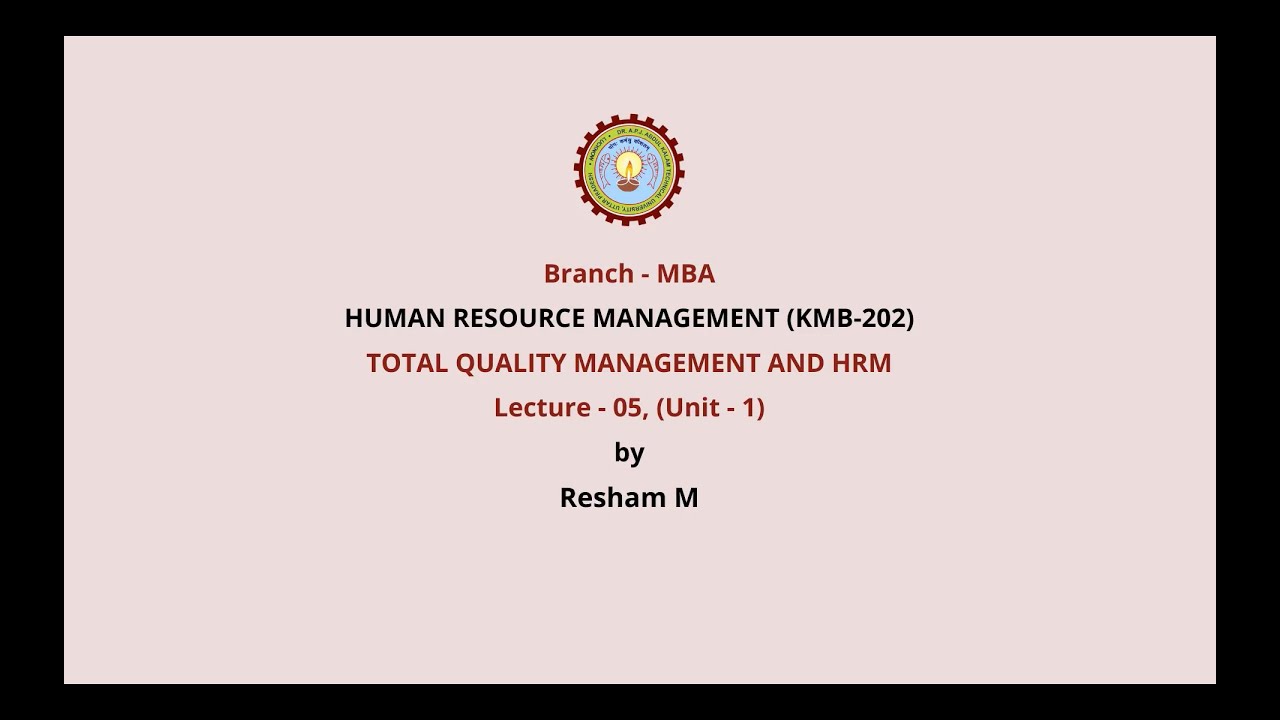What Are The Roles And Responsibilities Of A Facilities Manager
Summary
TLDRIn this video, Josh Vector from Limbo CMS delves into the importance of effective facilities management (FM), outlining its impact on safety, productivity, and customer satisfaction. He covers essential FM functions like maintenance, real estate, asset management, and space planning, explaining how both hard and soft FM contribute to a well-functioning workplace. The video also explores the role of facility managers, the benefits of in-house versus outsourced management, and key software solutions like CMMS and CAFM. The ultimate goal is to help FM professionals optimize their operations for better efficiency, safety, and employee well-being.
Takeaways
- 😀 Facilities management (FM) plays a critical role in creating safe, functional, and comfortable work environments that directly impact employee productivity and satisfaction.
- 😀 Effective FM reduces downtime, boosts employee morale, and enhances customer satisfaction by ensuring the workplace runs smoothly.
- 😀 FM functions include real estate management, maintenance, asset management, environmental compliance, and financial oversight, all essential for maintaining operational efficiency.
- 😀 The difference between hard and soft FM: Hard FM focuses on physical infrastructure like HVAC and plumbing, while soft FM deals with services like cleaning, security, and space planning.
- 😀 Facilities managers are responsible for strategic planning, daily operations, budgets, staff coordination, and handling emergencies.
- 😀 A facilities manager’s role is not just about fixing things; it involves overseeing safety, comfort, and ensuring the organization’s long-term success through efficient resource management.
- 😀 The structure of FM teams varies by organization size, but the key starting point is always having a facilities manager who coordinates activities and leads strategic initiatives.
- 😀 In-house facilities management provides full control over operations but can be costly, while outsourcing specialized tasks is a cost-effective alternative for businesses with limited budgets.
- 😀 A hybrid approach, combining in-house staff for routine tasks and outsourced vendors for specialized work, is a popular model for many organizations.
- 😀 Software solutions like CMMS, CAFM, EAM, IWMS, and BMS are essential tools for streamlining maintenance, optimizing space usage, and managing assets more effectively.
- 😀 Modern FM practices now extend beyond physical management to include cybersecurity, employee well-being, sustainability, and resource consumption, with software enabling better agility and interconnectivity.
Q & A
What are the key responsibilities of a facility manager?
-A facility manager is responsible for overseeing the maintenance, security, budgeting, and overall functioning of a facility. They manage physical assets, coordinate staff, and ensure the work environment is safe, efficient, and comfortable for employees and customers.
How does effective facility management impact employee productivity?
-Effective facility management contributes to a safe and comfortable work environment, reducing incidents and downtime. This leads to increased employee satisfaction and productivity, as workers can focus on their tasks without being hindered by facility-related issues.
What is the difference between hard and soft facility management?
-Hard facility management focuses on the physical infrastructure, including systems like HVAC, plumbing, fire safety, and mechanical maintenance. Soft facility management deals with services that enhance comfort and safety, such as cleaning, security, pest control, and landscaping.
Why is facility management critical to customer satisfaction?
-Facility management directly impacts the quality of products and services. A well-maintained, safe, and comfortable facility leads to higher customer satisfaction, as issues like poor lighting, temperature problems, or safety hazards can negatively affect the customer experience.
What are some common facility management software solutions?
-Common facility management software includes CMMS (Computerized Maintenance Management System) for maintenance tracking, CAFM (Computer-Aided Facilities Management) for space and maintenance management, EAM (Enterprise Asset Management) for asset tracking, and IWMS (Integrated Workplace Management System) for a combination of facility management and project management.
What are the advantages of outsourcing facility management versus keeping it in-house?
-Outsourcing can provide specialized expertise and potentially reduce costs. However, keeping facility management in-house offers greater control over operations and security. A hybrid approach, combining in-house staff for routine tasks with outsourced contractors for specialized services, can often be the most cost-effective solution.
What are the core functions of facility management?
-The core functions of facility management include real estate management, occupancy management, maintenance management, asset management, financial and performance management, and building systems management. These tasks ensure the facility is running efficiently and safely.
How do software solutions like CMMS and CAFM enhance facility management?
-CMMS and CAFM software streamline the maintenance and management processes. CMMS helps track maintenance tasks and prevent equipment failures, while CAFM offers tools for space planning, occupancy management, and integrating maintenance with broader facility operations.
What skills are essential for a facility manager to succeed?
-A successful facility manager needs strong communication skills, the ability to think strategically, organizational expertise, and a good understanding of budgeting, asset management, and problem-solving to keep the facility running smoothly and efficiently.
How has the role of facility management evolved with modern workplace trends?
-Facility management has evolved to focus not only on maintaining physical spaces but also on employee well-being, sustainability, and the integration of smart technologies. Modern FM now includes managing both physical and cyber security, resource consumption, and enhancing the workplace environment through automation and connectivity.
Outlines

Cette section est réservée aux utilisateurs payants. Améliorez votre compte pour accéder à cette section.
Améliorer maintenantMindmap

Cette section est réservée aux utilisateurs payants. Améliorez votre compte pour accéder à cette section.
Améliorer maintenantKeywords

Cette section est réservée aux utilisateurs payants. Améliorez votre compte pour accéder à cette section.
Améliorer maintenantHighlights

Cette section est réservée aux utilisateurs payants. Améliorez votre compte pour accéder à cette section.
Améliorer maintenantTranscripts

Cette section est réservée aux utilisateurs payants. Améliorez votre compte pour accéder à cette section.
Améliorer maintenant5.0 / 5 (0 votes)






